Beneath the swaying canopies of Britain's woodlands, and sometimes skimming over the top of them, lives a diverse array of fauna, from snuffling badgers and hopping red squirrels, to fluttering butterflies and drumming bush-crickets.
The names bestowed upon some species give you a hint that they have a strong association with trees and woodlands – treecreeper, woodcock, hazel dormouse and oak bush-cricket, to name a few.
This guide introduces you to some animal species that you might spot on your next woodland wander. What you can see will vary depending on the season, but there is always something to grab the senses.
Interested in learning more about wildlife identification? Check out our guides to beautiful butterflies, fantastic fungi and wonderful wildflowers.
Woodland animals
Roe deer (Capreolus capreolus)
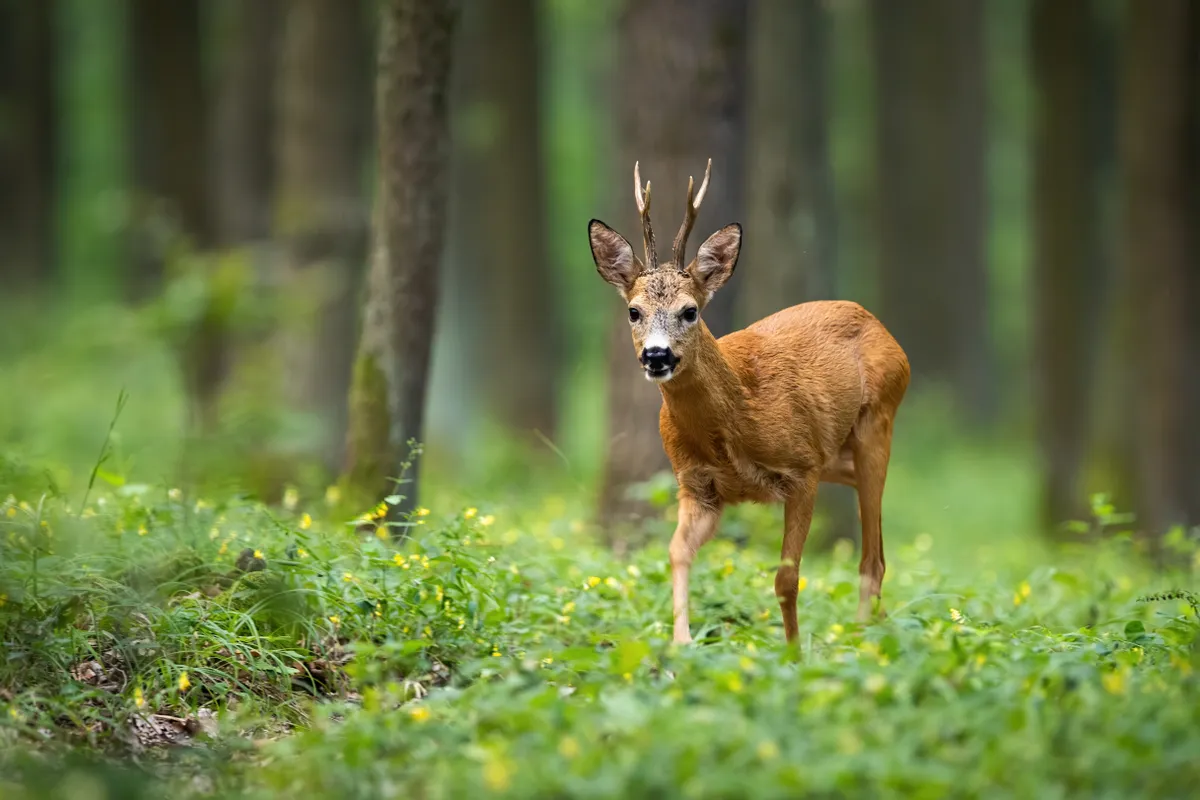
Once extinct across England, Wales and southern Scotland and reintroduced to parts of England in the 19th century, the roe deer is now the mostly distributed deer species in the country. It is closely associated with woodland, but can be seen in fields when feeding. Males (bucks) have relatively small antlers compared to other deer, with up to three points, which are cast in November to December. Both females (does) and males have white rumps and will bark if startled.
European badger (Meles meles)
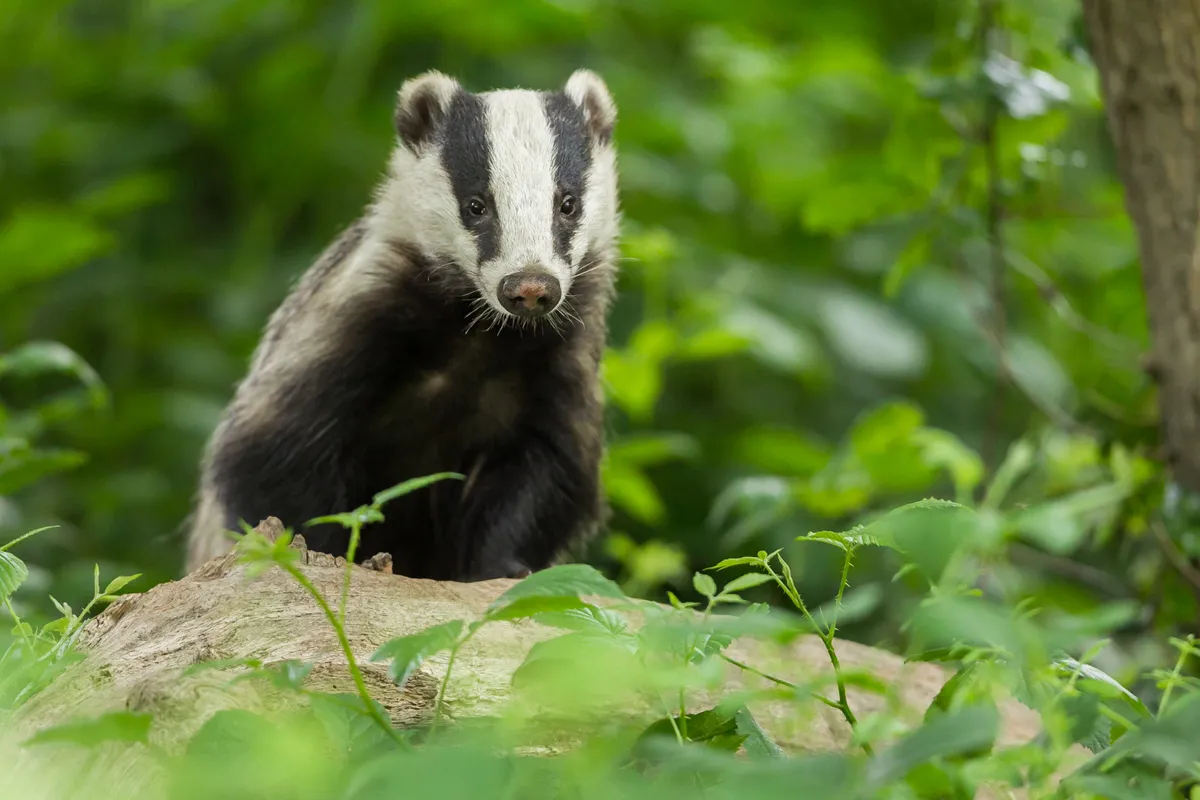
The European badger is one of our most well-known animals – even if it’s rarely seen. A nocturnal species, you may be lucky to spot a family group emerging from a sett before sunset on warm sunny days in summer and early autumn. But care must be taken to never disturb badgers or their setts, as they are protected and it is illegal to do so. Look out for field signs such as large five-toed footprints, and communal latrines.
Both the European badger and the roe deer are examples of tautonyms, where the genus and species name are the same.
Red squirrel (Sciurus vulgaris)
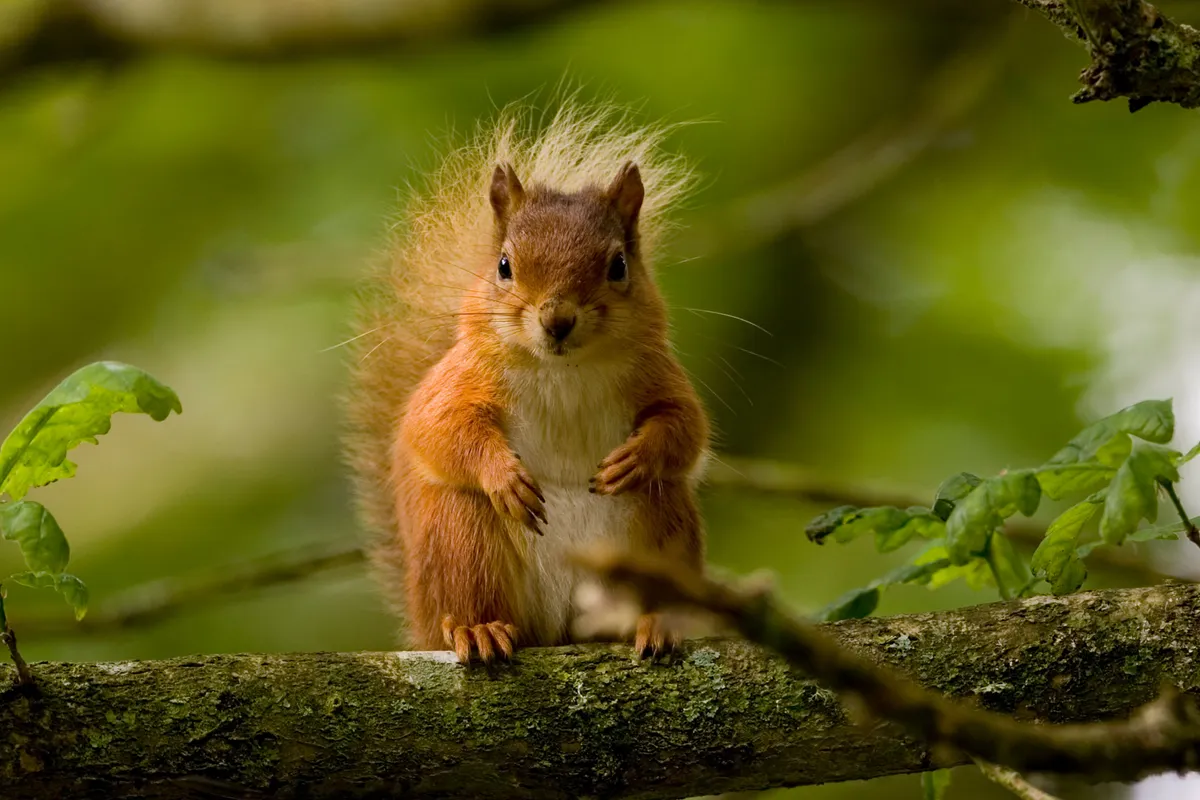
Reduced in distribution and population size by the introduction of the non-native grey squirrel, the native red squirrel can require some careful planning to see. Unlike the grey, it spends more time in the trees and doesn’t come down to the ground as often. It can be found in a variety of woodland types, where it feeds on fruit, bark, lichen, seeds and nuts. The latter are buried during autumn in preparation for food scarcity in winter.
Hazel dormouse (Muscardinus avellanarius)
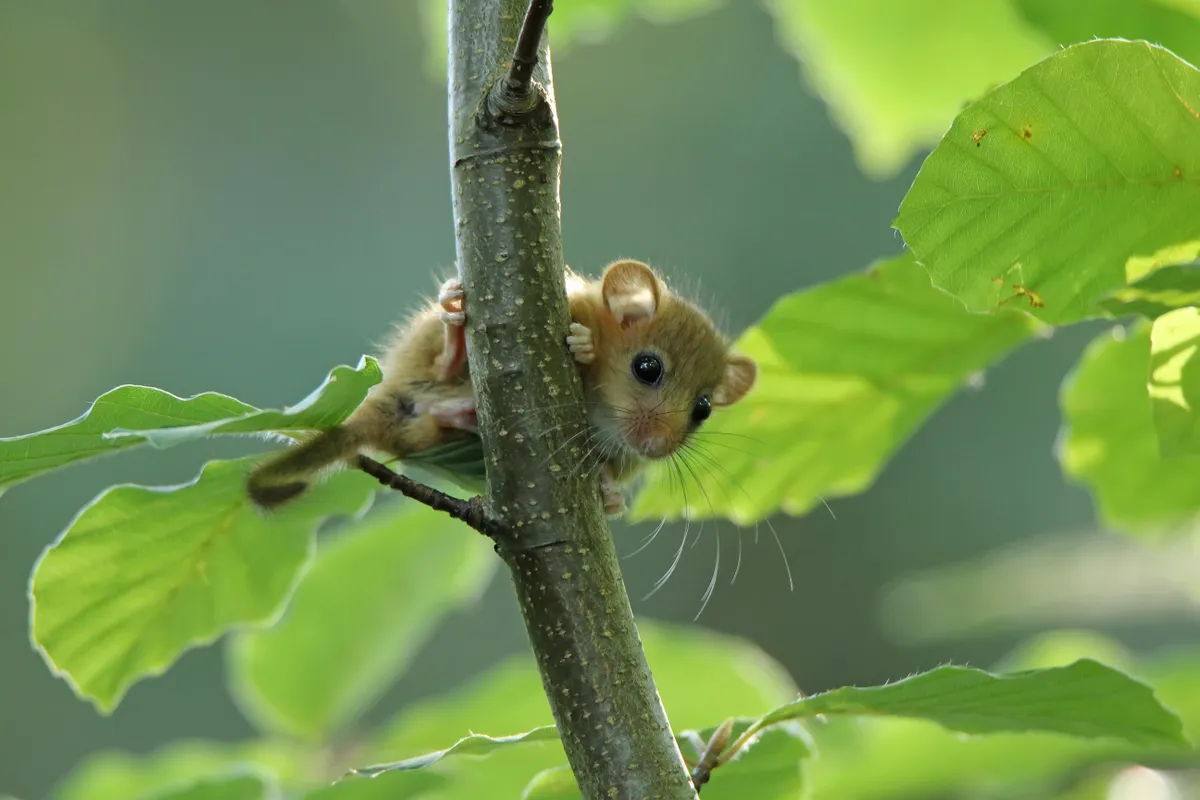
Weighing no more than 40g, the little hazel dormouse is one of our cutest woodland residents – maybe even out of all our UK fauna. Its diet changes throughout the year, depending on what’s available in the woodland. In spring when it emerge from hibernation, it feeds on flowers, adding caterpillars to its diet in summer, and then moving onto nuts, seeds and berries in autumn. This species is elusive, so look out for field signs such as nests and nibbled hazel nuts.
Eurasian treecreeper (Certhia familiaris)

Well-named for its habit of creeping up tree trunks and branches, the treecreeper feeds on small insects. It will start at the base of tree and gradually work its way up, sometimes spiralling round the tree as it goes up, searching for food amongst the crevices of the bark to pick out insects with its long, downcurved bill. Whilst common and widespread, it can be hard to spot thanks to its mottled brown feathers.
Tawny owl (Strix aluco)

With its distinctive ‘tu-wit, tu who’ and ‘keewik’ calls, the tawny owl is more easily heard than seen, despite being the most common owl species in the UK. The species is nocturnal, spending the day roosting in a tree – if you’re lucky you might spot one, or a collection of its coughed-up pellets near its roosting site. The tawny owl is normally found in broadleaved woodland, but can be in farmland and large urban parks.
Eurasian woodcock (Scolopax rusticola)
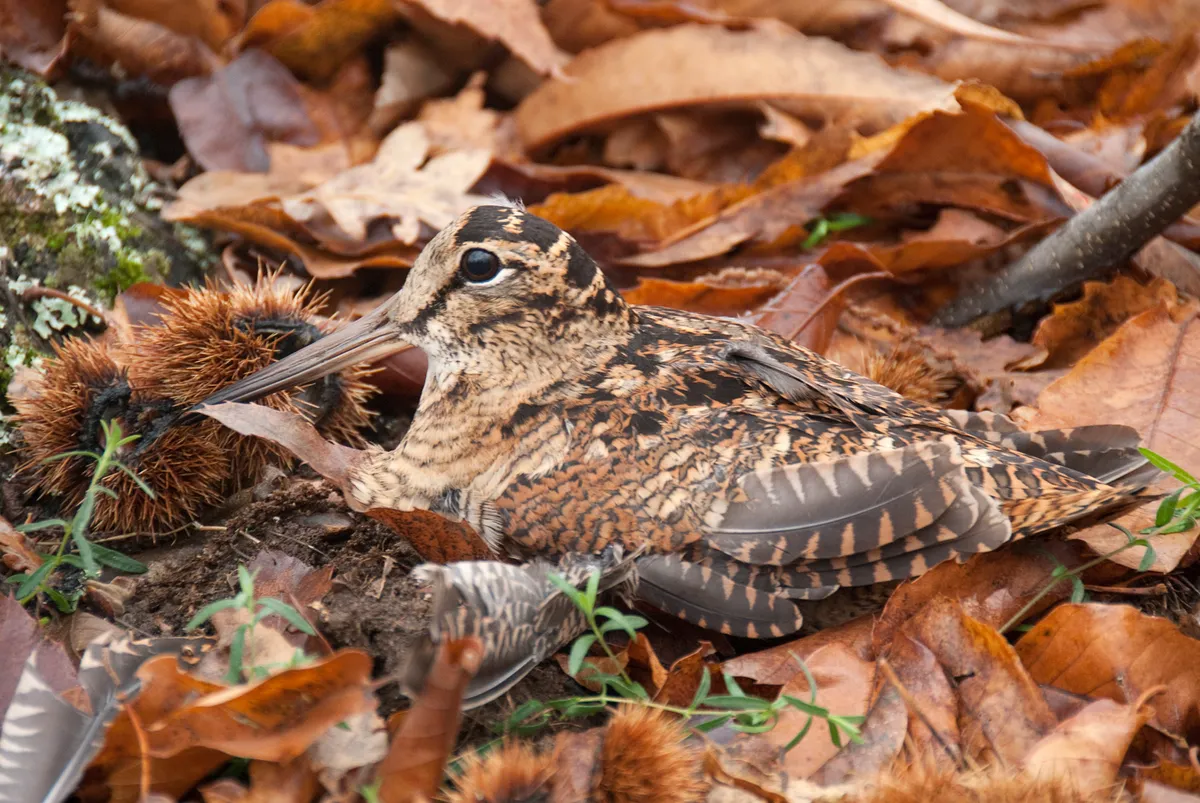
Unusually for a wader, the woodcock lives in woodlands and is a nocturnal species. It has a mottled brown plumage that helps it blend into the leaf litter, where it spends its days and builds its nests. A recent study found that that the feathers in the underside of its tail are the brightest feathers in existence, which may play a role in the courtship behaviour where a male puts on a display called ‘roding’ to attract a female.
Speckled wood butterfly (Pararge aegeria)
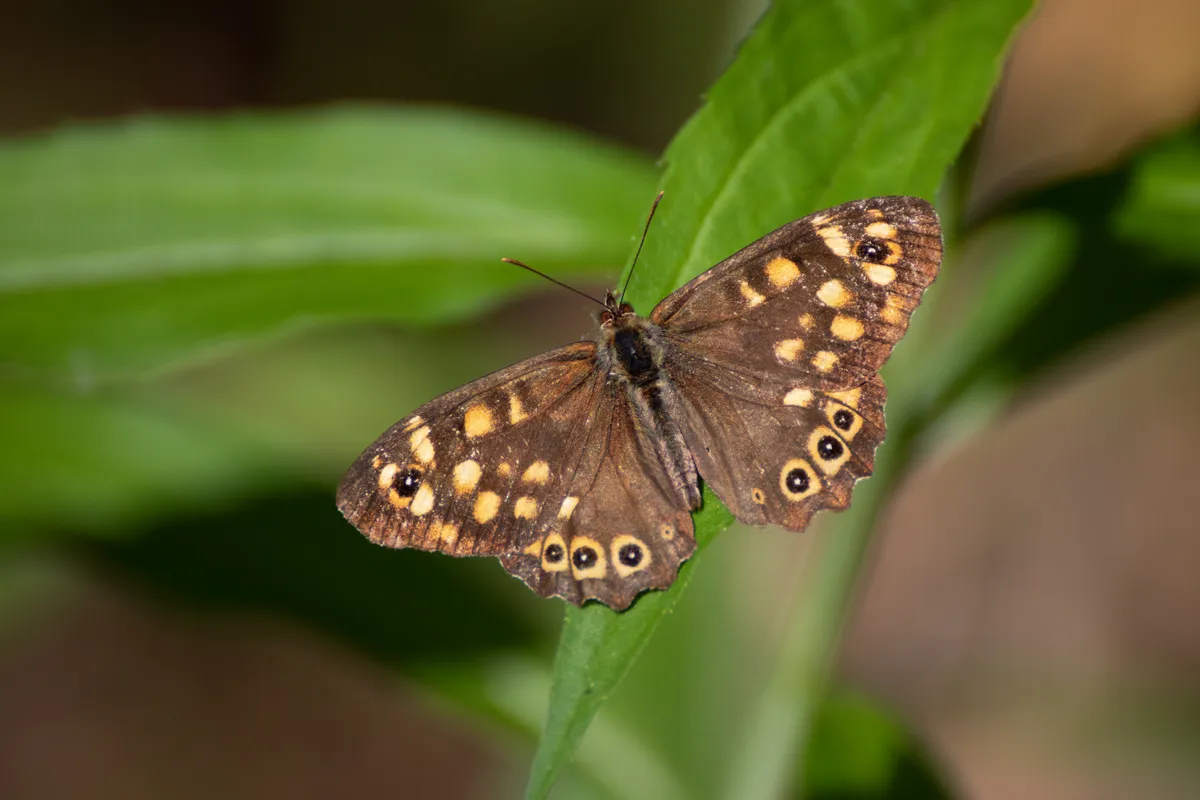
Widespread across much of the UK, the speckled wood butterfly actually had a contraction of its range in the late 1800s and early 1900s and has gradually been recolonising since. As the name suggests, it is a woodland butterfly and is often seen fluttering amongst sun-dappled undergrowth or feeding from aphid honeydew. The male holds a territory, often perching in a sunny spot to keep an eye out for intruders which it will then fight.
Orange ladybird (Halyzia sedecimguttata)
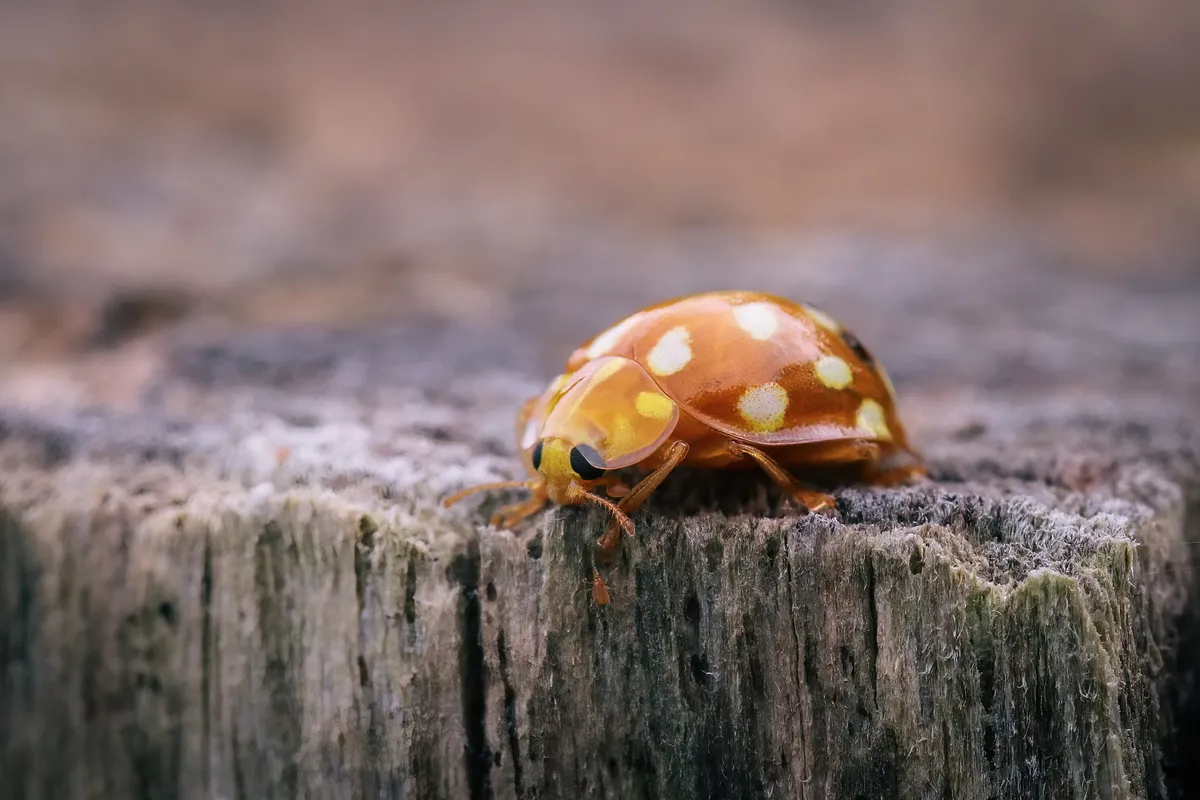
Bright orange in colour with creamy-white spots, the orange ladybird is associated with sycamore and ash trees, where it feeds on the leaves’ mildew. The scientific name points to how many spots it has, up to 16, as ‘sedecim’ is Latin for sixteen and is often shortened to 16-guttata. Look out for this ladybird between April and October, or over winter in leaf litter. It can be confused with the cream-spot ladybird, but that has a darker red-brown body.
Forest bug (Pentatoma rufipes)
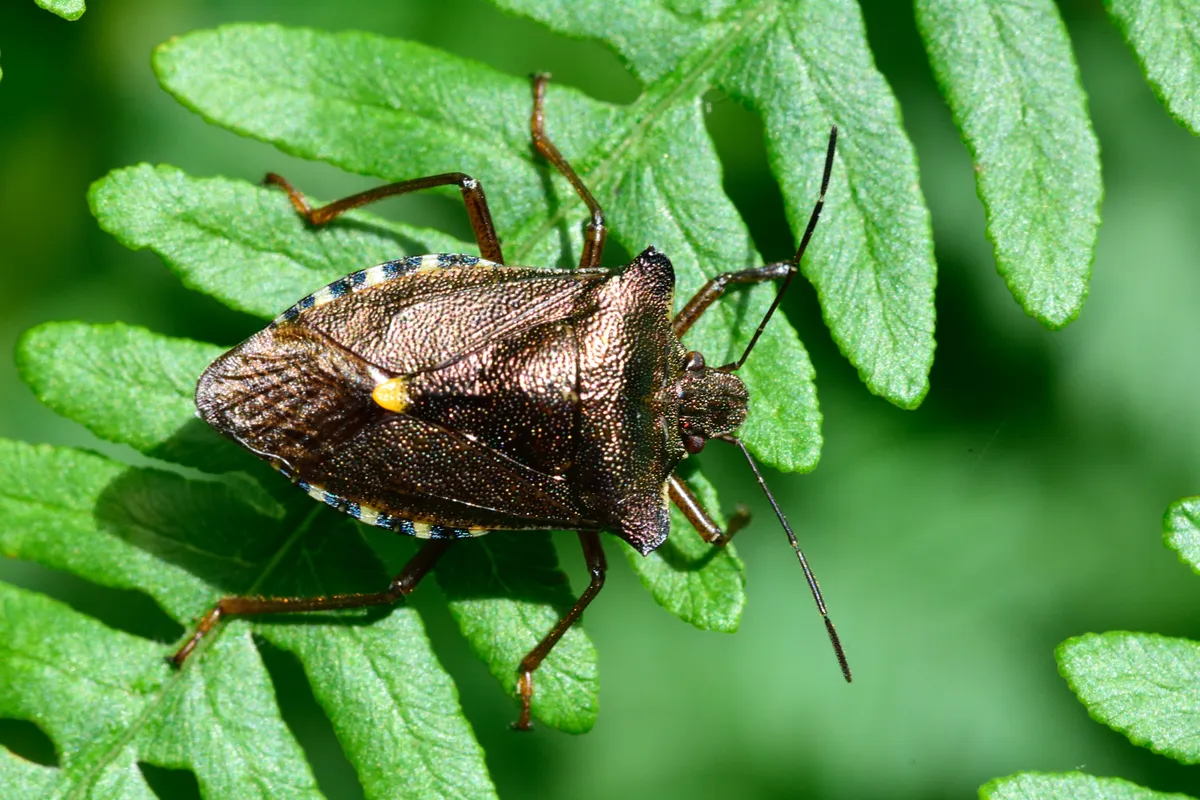
This large brown shieldbug, measuring up to 15mm in length, is well-named in two respects. As the ‘forest bug’, it is usually associated with oak and broad-leaved woodlands, as well as gardens. It mainly feeds on the sap of deciduous trees such as oak, alder and hazel. It is also known by an alternative name of the ‘red-legged shieldbug’, named for its orange-red coloured legs. Look out for the adults between July and late autumn.
Oak bush-cricket (Meconema thalassinum)
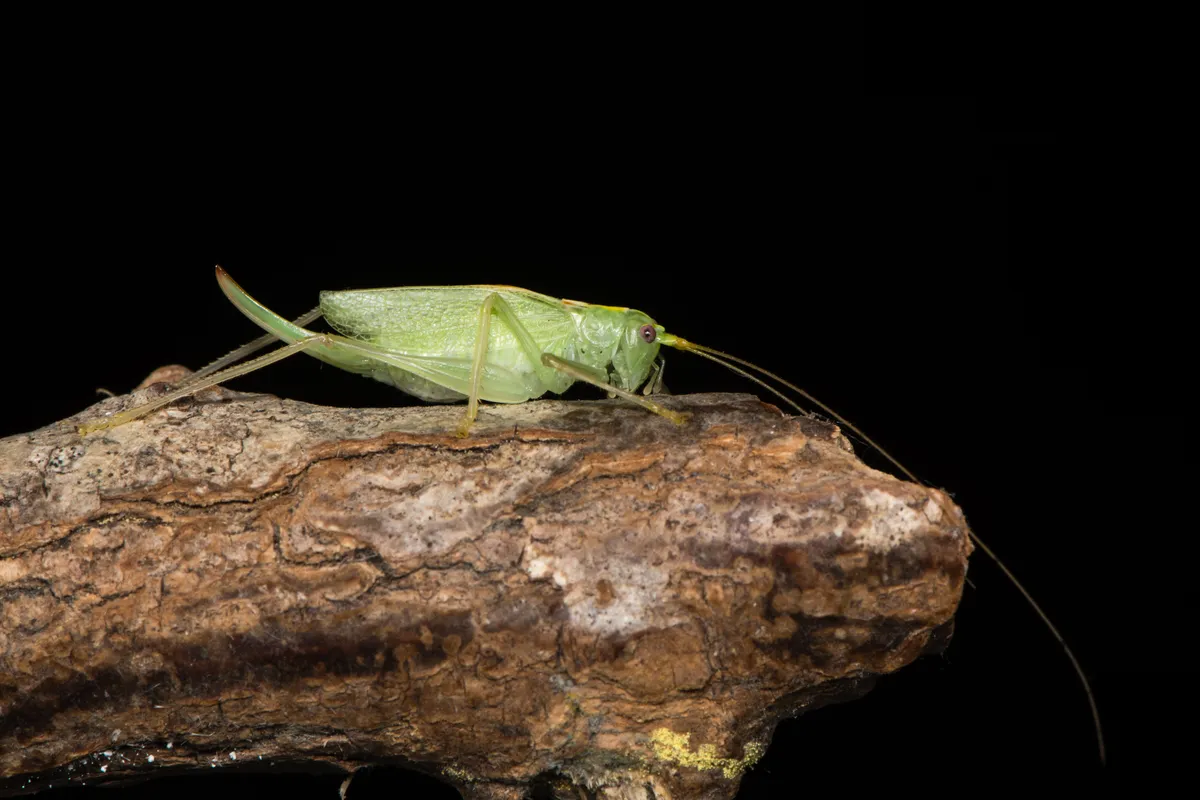
With a light lime-green body and yellow-green stripe along its back, the oak bush-cricket is our only native arboreal bush-cricket. It can be confused with the very similar-looking southern oak bush-cricket which was first recorded here in 2001 and is gradually spreading. A key difference is the wings, in oak bush-crickets they are medium-length (compared to other bush-crickets) and in southern oak bush-crickets they are vestigial. Males don’t stridulate, but their drum hind legs on tree leaves to ‘sing’.
Great spotted woodpecker (Dendrocopos major)
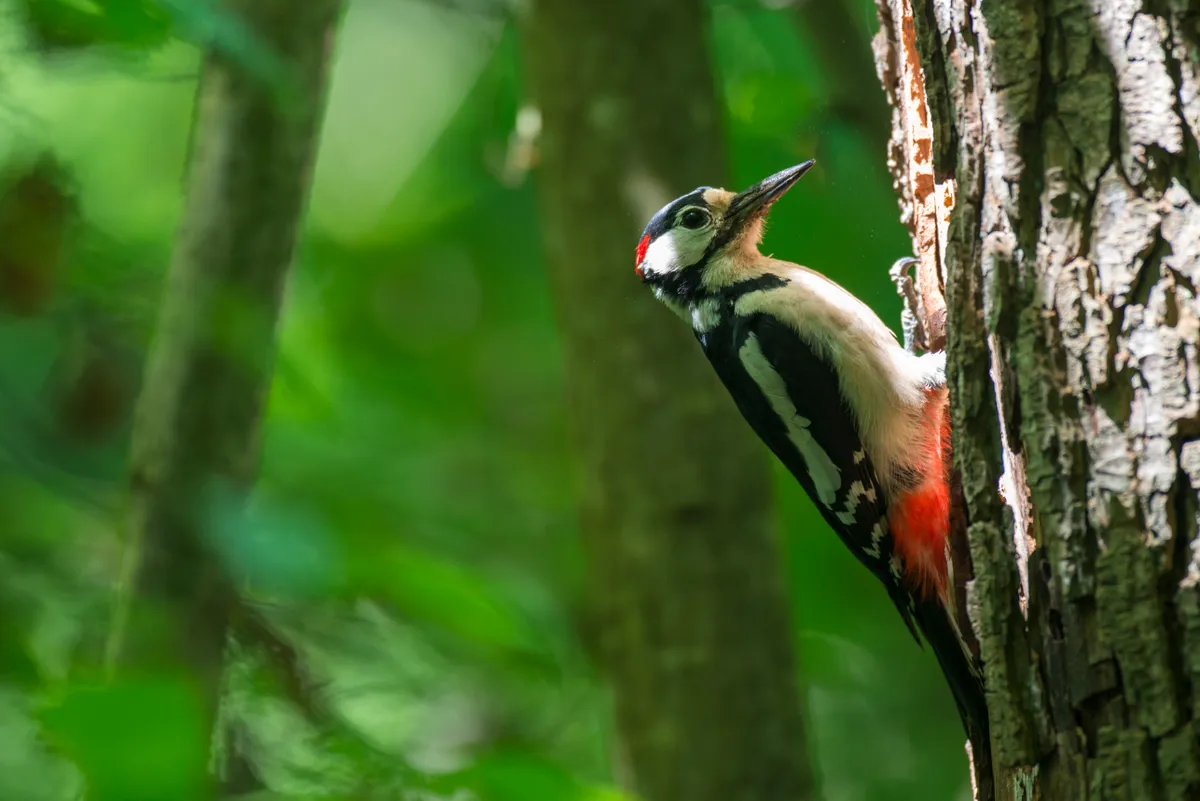
Largely black and white with flashes of red on the back of its head and rear, the great spotted woodpecker is the size of a blackbird. Its bursts of drumming in spring woodlands are a courtship call. Its emits a high-pitched ‘kik’ sound and has distinctive undulating flight. Of the four woodpecker species, it’s most likely to visit garden birdfeeders.





